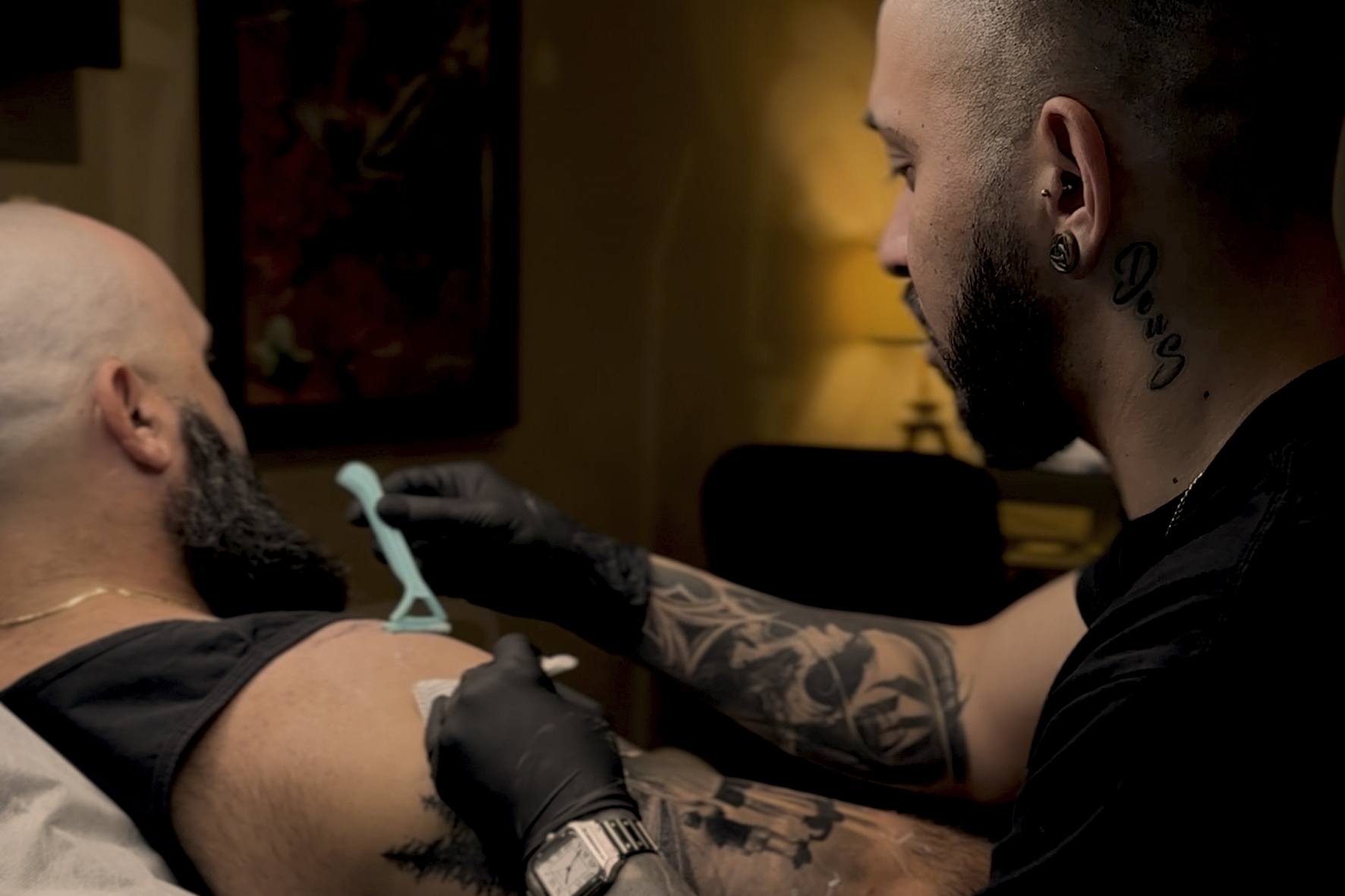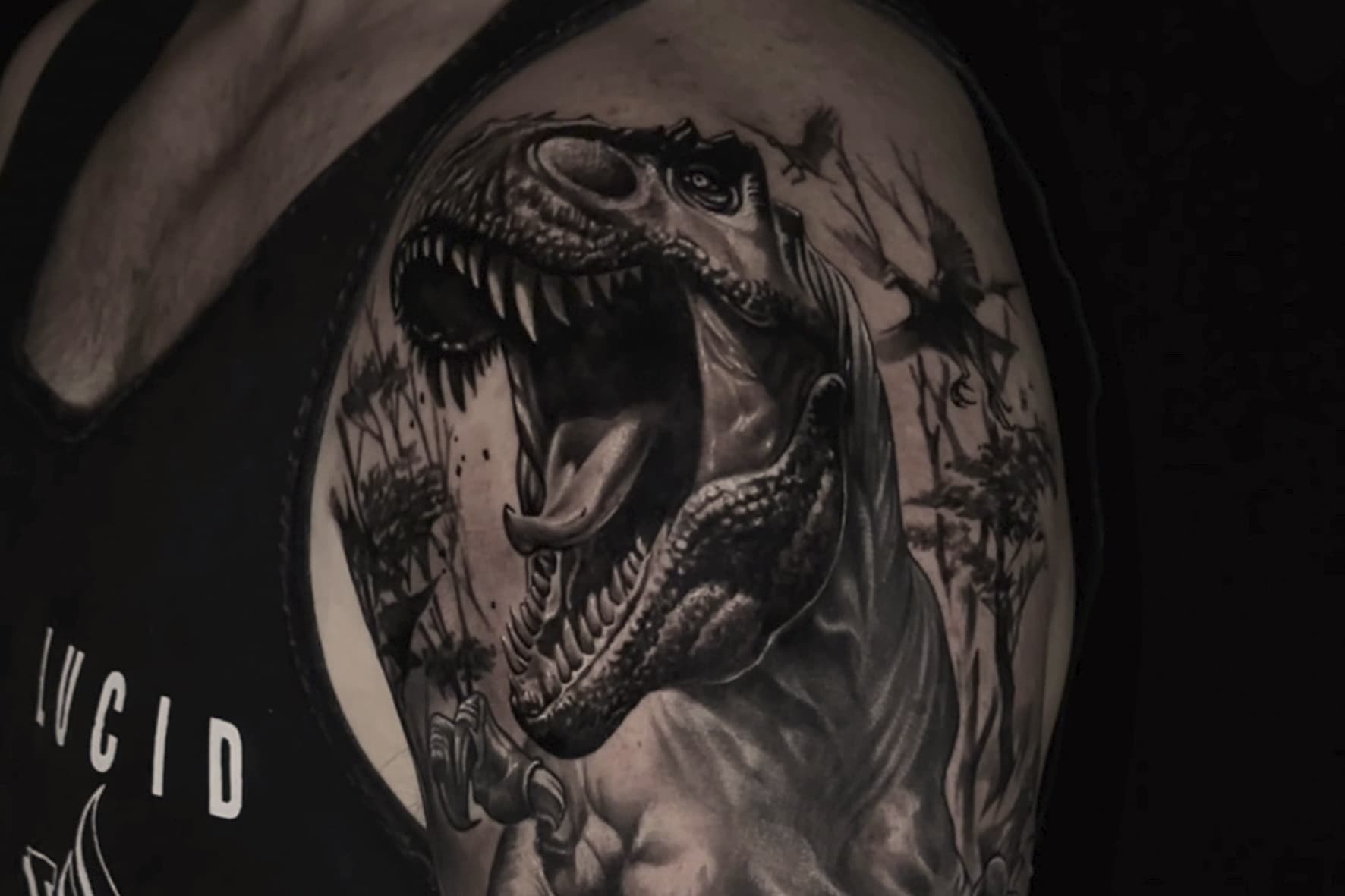A tattoo should live with the body — not just sit on it.
Tattoo positioning and anatomy are often overlooked by clients — and even by some artists. But they play a crucial role in how your tattoo will look, age, and flow with your body over time.
I remember a client who came in with a drawing made by a friend. On paper, it looked great — lots of detail, nice composition. But the moment we tried placing it on his body, it just didn’t work. The tattoo positioning didn’t follow the anatomy. The flow was off. The elements didn’t connect.
What seemed powerful on paper fell completely flat on the skin.
That’s when I explained something I’ve learned over more than 11 years of tattooing:
A high-quality tattoo should move with the body — like it was always meant to be there.
It’s not just about knowing how to draw. It’s about knowing where and how to place that art — and that starts with tattoo positioning and anatomy.
Anatomy-Based Tattoo Positioning: The Secret to Realism
Especially in black and grey realism, and even more so with large-scale compositions, tattoo positioning and anatomy become absolutely essential.
Every body is different. It has flow, shape, curves, and movement. And a tattoo must respect all of that to feel alive and powerful.
It’s like each muscle group is part of the canvas.
If the artist ignores tattoo anatomy, the result might be visually confusing or lose impact.
This article from Tattoo.com explains how muscle flow influences tattoo placement and why anatomical awareness is key for professional artists.
How Anatomy Affects Tattoo Flow and Composition
At Washington Tattoo, every project starts with a body analysis.
We look at your anatomy, posture, muscle structure, and how the skin moves. This allows us to design pieces that:
- Enhance your natural shape;
- Heal in harmony with your skin;
- And most importantly, feel like they truly belong to you.
Want to understand how we apply this in our design process?
Check out our post on realism tattoo consultations.
InkTrail.com also shares great techniques for composition in black and grey realism tattoos.
Common Mistakes in Tattoo Positioning and Anatomy
Many tattoos look amazing on paper — but awkward when applied to the body.
Why? Because most artists don’t study anatomy or tattoo flow.
Creating a great design is one thing.
But knowing how to position it on a moving, living canvas is something else entirely. And it’s what separates amateurs from professionals.
Tattoo Positioning and Anatomy: The Foundation of Great Art
When a tattoo flows naturally with the body, it not only looks better — it ages better, feels more integrated, and becomes part of your identity.
That’s why, at Washington Tattoo, we build every design from the body outward — not the other way around.
We believe in composition, anatomy, and intention. That’s how high-end realism tattoos are born.
💬 Have you ever seen a tattoo that looked great in a drawing, but didn’t fit the body?
Let us know in the comments — let’s talk about it!





